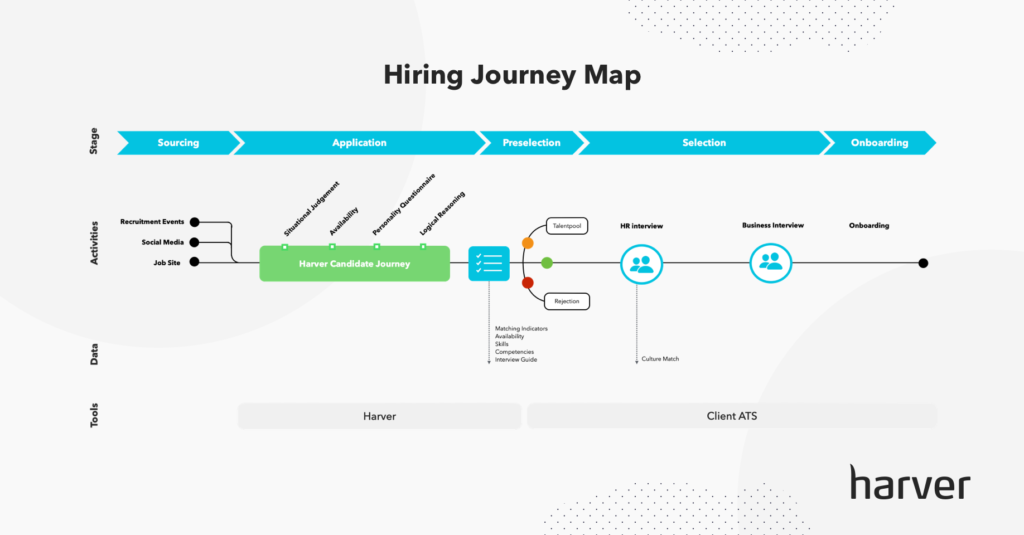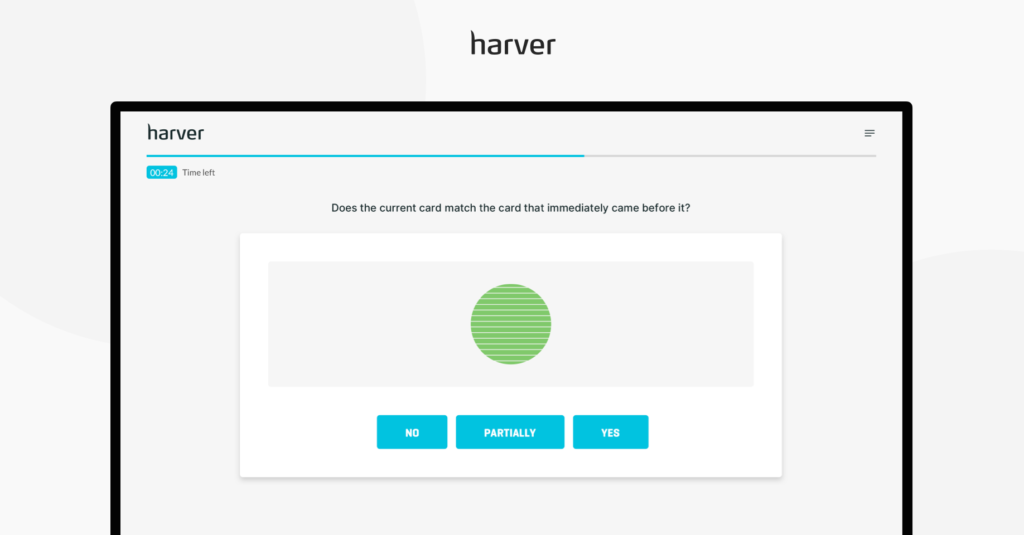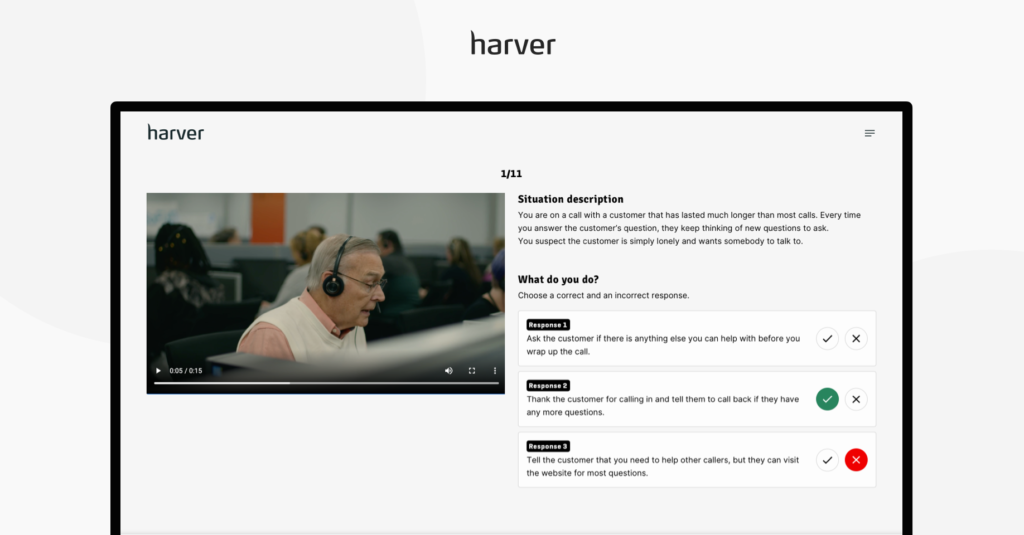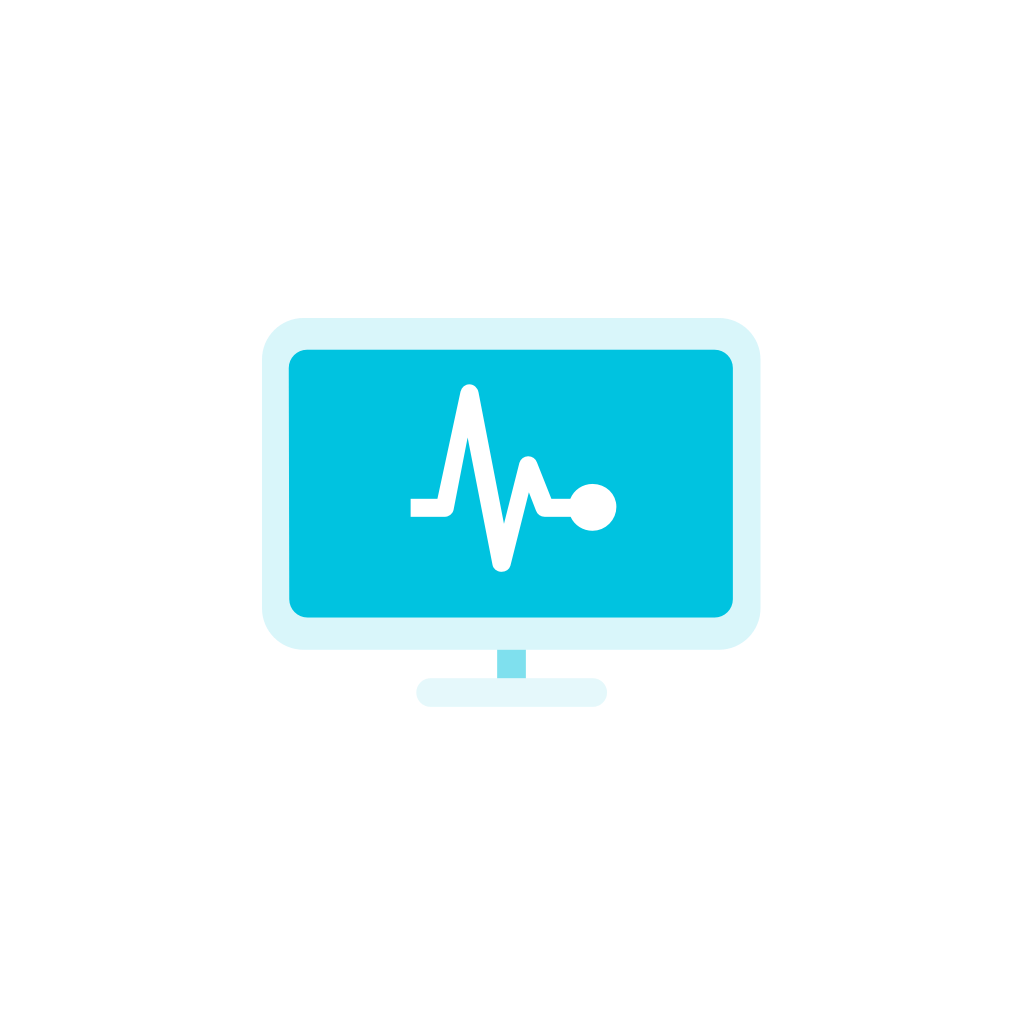With COVID on the rise again, the hybrid customer service model that was once considered a temporary measure is here to stay, at least for the time being. So how can you deliver continually outstanding customer service? By hiring both work-from-home and office-based call agents with the qualities of a good customer service representative.
This requires a hybrid hiring approach or, in other words, setting up two hiring processes in one system: one for hiring remote employees, and one for hiring on-premise employees.
Sounds like a big task? Don’t worry, we’ve helped major BPOs and contact centers to create hybrid customer service organizations many times over, and we’ll show you our approach below. But first, let’s remind ourselves of the differences between a hybrid customer service organization and a classic on-site one.
What’s in?
Like what you see?
Don’t miss out. Subscribe to our quarterly digest to get the latest TA and TM resources delivered right to your inbox.
How the hybrid customer service organization is different from the classical one
Classical customer service organization
As you know, the classic customer service organization is one where all contact center agents are co-located together. The business centers around a common culture, one that is enhanced by agents simply being in close proximity with one another.
This co-location model helps generate social cohesion among agents with its high-touch approach and develops a shared trust between agents and managers through close coaching. It also gives employees a sense of belonging to the organization and a common purpose to their work, which provides a shared identity, inspiring them to do their best work.
The downsides to having an on-site contact center include real estate costs, the ongoing pandemic, and limited flexible working options to name but a few.
Hybrid customer service organization
The hybrid model on the other hand, according to a report by McKinsey, allows organizations to enjoy the best of both worlds by mixing virtual i.e. WFH, with on-site working. It promises greater efficiency, better access to talent, increased employee productivity, smaller teams, reduced costs, centralized resources, increased individual flexibility, and increased employee experience.

Remote working helps fill shifts that typically are harder to fill with staff on-premises – for example during late-night hours.
Source: Puzzel
Hybrid works for practically every contact center and BPO set up – from partially remote workforces with a large HQ, to those organizations with multiple hubs and multiple micro hubs, and even those using flexible working space.
To do it right, however, requires strategic management to ensure the hybrid arrangements work for all parties, and that starts with having the right hiring processes in place.
You can’t hire WFH and on-site agents using the same hiring process. It simply won’t yield the high-quality call agents you need. But why is that, though?
Why you need two separate hiring processes
There are certain skills that both WFH and on-site agents should possess: emotional intelligence, empathy, multitasking, creative problem solving, customer orientation, and the ability to work under pressure. Also, all contact center agents should be tech-savvy or willing to and able to learn and should possess clear communication and language skills.
However, these aren’t the only skills you’re looking for when hiring for hybrid customer service positions. A work-from-home customer service agent requires a slightly different skill set to an office-based agent. A WFH agent, for example, should display certain personality traits such as self-reliance, time management, self-motivation, self-starter, resourcefulness, or organization, because they need to be able to work in isolation.
An office-based agent, on the other hand, should possess personality traits such as stress resistance, dependability, team player, conflict resolution, able to tolerate noise while working, as such skills enable them to flourish in a busy, noisy, on-site environment.
As highlighted above, successful employees in different workplaces possess different skills and traits, meaning you’ll have to assess applicants for their suitability for the different workplace locations they intend to work from.
In order to assess an applicant’s suitability for your hybrid organization, you want to check to see if they possess the skills that predict success in your customer service role and if they have the right IT setup.
Hire better live chat agents, at scale.
Dive into the rise of live chat, the skills of top-performing agents, and how to best assess them to reduce attrition and guarantee top-notch customer service.

How to design a hybrid volume hiring solution
Design the candidate journey first
With the hybrid solution requiring different approaches to each hiring process, the first thing to do is to define all the steps you need to take to get candidates from ‘apply’ to ‘hire’.
At Harver, we do this during a Hiring Journey Mapping workshop, where we look at the entire candidate journey, including touchpoints and experience, data collection, and process inefficiencies.

The goal of this first step is to ensure that each candidate selection flow delivers a seamless hiring journey, regardless of the end destination, from sourcing the applicants, through the assessments, screening, interview scheduling, hiring, and onboarding.
While the general candidate journey for both WFH employees and on-site contact center agents will be the same, the assessments and screening will be different, and where you position the assessments in your flow might vary too.
Select appropriate assessments
There are a few hygiene assessments that both roles might require.
- Hard skills can be assessed through a typing test and a spoken language assessment, to make sure the candidates have the right level of language proficiency to support the customers they’re helping.
- Soft skills such as multitasking can be assessed through our multitasking gamified test. These can easily be dropped into your hiring flow allowing you to assess candidates’ short term memory and ability to switch between tasks quickly.

A popular behavioral assessment tool that allows applicants to experience various realistic scenarios related to their daily role, is the situational judgment test (SJT). These are a great way for you to gauge an applicant’s natural response to a situation, in order to determine if they display the ideal behavior the role requires, quickly identifying top performers who are most suitable for the role.
At the same time, the applicant gets a hands-on feel for the role, seeing what the job is really like, without having to commit to accepting the job, providing you both with an insight about the potential fit for your organization.
Harver’s interactive SJTs are designed by industrial-organizational (IO) psychologists and are fully customizable to meet your needs, making them the perfect solution to assess candidates in both a busy workplace and a WFH environment.

With more customer interactions occurring online, assessing applicants for the necessary traits to thrive in a live chat role is essential. The traits and skills that are indicative of a great contact center agent, don’t necessarily translate over to live chat support roles.
If you need to fill these sorts of roles, a live chat support simulation assessment is essential to not only introducing the applicants to the role and the wide range of personalities they might encounter doing the job for real but assessing applicants for various interdependent traits and skills that are key to carrying out the role successfully.
Experience our best-in-class Live Chat Assessment first-hand!
Perfect for remote hiring, our live chat assessment makes it easier than ever to hire live chat agents. Candidates experience the job, while you get actionable data to drive hiring decisions.
The other assessments will vary according to the role.
WFH agents
For individuals who are going to be working alone at home, who don’t have in-person access to a line manager, you need them to have the confidence and ability to be able to firstly try and deal with a complex situation themselves. In order to do this, applicants need to possess cognitive ability. This is the ability to learn, apply new knowledge and solve problems quickly and efficiently.
Harver’s cognitive ability assessment is constructed to assess general intelligence. It’s made up of 5 subtests that measure across a wide spectrum of cognitive skills within the intelligence framework. Because cognitive ability skills vary between roles, this assessment is modular, meaning you can set it up to measure specifically for the WFH role, and test applicants accordingly.
As a side note, for WFH agents, you also want to include a system diagnostic module in your application flow to make sure candidates have the proper home IT system set up to support them in their role. You need to check both their hardware and software, ensuring they have the right internet connectivity and system specs needed to run your software and programs remotely.
On-site agents
For office employees, it’s important you check culture fit and personality traits, to make sure candidates don’t just fit with the team, but that they’ll work well in your office and its environment.
For these candidates, we recommend assessing them through a combination of our personality questionnaire and a cultural fit assessment, which will help you identify quality candidates who possess the natural behavior to complement your existing company culture, while at the same time delivering a fun and insightful candidate experience, even at volume.
One point to note – where the assessments sit in your recruitment process, and their exact sequence and flow might vary for the different roles.
If you’d like to learn more about our Hiring Journey workshop or the assessments that we recommend for hybrid contact center roles, you can book a demo below.
If you’d like to see how Haver can transform your hiring process,
book a demo here!
Launch your recruitment process
Recruitment process for WFH customer service agents
The main challenges you typically face when recruiting WFH customer service agents include high employee turnover, low quality candidates, lack of essential skills and traits, misaligned candidate expectations of what the role really is, unsuitable personal IT setup to support them in their role.
Therefore, your application flow could look like this:
- Run videos introducing the company and the role.
- Collect candidate personal information including contact details, previous experience, availability and resume.
- Run personality questionnaire and cognitive ability assessments to identify good customer service attributes.
- Schedule video interview
- Run language proficiency assessment and typing skills tests
- Run system diagnostic test
Note that the system diagnostic test has to be included in the flow, to make sure WFH agents have the necessary setup needed for this. Otherwise, you’ll end up hiring people who don’t have the tools to do the job, which wastes time on both sides.
Recruiting on-premise customer service agents
The main challenges you typically face when recruiting on-premise customer service agents include high employee attrition rates, misaligned role expectations, lack of essential skills and traits, and fluctuating hiring requirements.
Thus, your recruitment process could look like this:
- Collect candidate personal information including contact details, previous experience, availability and resume.
- Run videos introducing the company and providing a realistic example of the role.
- Run SJT, personality questionnaire, culture fit assessment, language proficiency assessment and typing skills tests.
- Results
You see that this is much shorter, and doesn’t require a system diagnostic test. You can, of course, customize the process if you want to filter out certain candidates or hire more of a particular type by implementing or removing filters.
Next steps
The global pandemic highlighted the strategic importance for contact centers and BPOs to have a hybrid customer service model. But as the steps above show, adopting a one size fits all recruitment approach to find employees to work in the hybrid model, does not work – you need to consider not just people and the process, but technology too.
We recommend you set up two processes within the one hiring system: one for hiring remote employees, one for hiring on-premise employees.
If you’d like to see how Harver can support you hiring representatives with good customer service attributes, for your hybrid customer service organization, you can book a demo below.
Ready to transform your hiring process?



